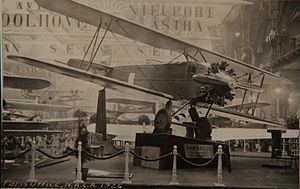Top speed 242 km/h Length 8.85 m Manufacturer Avia | Wingspan 11 m First flight 1927 | |
 | ||
Designers Pavel Beneš, Miroslav Hajn | ||
The Avia BH-26 was a two-seat armed reconnaissance aircraft built in Czechoslovakia in 1927. It was a single-bay unstaggered biplane with equal-span wings and a fixed tail-skid undercarriage. Both upper and lower wings featured long-span ailerons, which were dynamically balanced by a small auxiliary airfoil mounted to the upper surface of the lower ailerons. Its design was typical of this type of aircraft built during World War I and the years following; pilot and observer in tandem open cockpits with the observer armed with a machine gun on a ring mount. As with many other Avia designs, the BH-26 originally had no fixed fin; only a rudder, but this was changed in service.
Specifications
General characteristics
Performance
Armament
References
Avia BH-26 Wikipedia(Text) CC BY-SA
